 Hurrah! Rainbow is returning to our TV screens. Sadly, though, it's only repeats.
Hurrah! Rainbow is returning to our TV screens. Sadly, though, it's only repeats.Click here to see the full news story.
I'm still hoping and praying that a new series will one day be made.
The daily adventures of a fabulous poof in an emotional jungle. Watch as imagination, fact and fiction blur into an insane life dependent on outrageousness and an occasional venomous jibe.
 I went into the city today, namely to buy a light fitting for the living room. Oh, what's the best term to use? Living room? Lounge? Front room? Sitting room? What?
I went into the city today, namely to buy a light fitting for the living room. Oh, what's the best term to use? Living room? Lounge? Front room? Sitting room? What? I just have to share this photograph with you, dear readers. They are my two favourite things of the moment:
I just have to share this photograph with you, dear readers. They are my two favourite things of the moment: We've decided to go back to Japan in early September.
We've decided to go back to Japan in early September. This week, according to iTunes, I have mostly been listening to:
This week, according to iTunes, I have mostly been listening to:
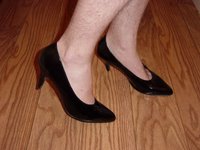 I've been having an ebay day today.
I've been having an ebay day today. I'm so excited - and quite tempted to bid... You may well know that there's a guy selling beans, one by one, on ebay, all for charity of course... Click here to see Pet Shop Beans!
I'm so excited - and quite tempted to bid... You may well know that there's a guy selling beans, one by one, on ebay, all for charity of course... Click here to see Pet Shop Beans! The UK Metric Association says the UK should adopt metric road signs and furthermore should set a date for it, as soon as possible.
The UK Metric Association says the UK should adopt metric road signs and furthermore should set a date for it, as soon as possible.Suppose we want to find how much paint is needed to cover a wall. The wall's measurements are either 4.37 m long and 2.39 m high, or 14 feet 4 inches by 7 feet 10 inches; what's its area?
The decimal basis of metric means we can find the answer straight away (with the aid of a calculator) as 4.37 x 2.39 = 10.4443 or approximately 10.4 m2.
Now we have to multiply 14 feet 4 inches by 7 feet 10 inches to get the result in square feet.
We can't do this directly without either converting to inches or decimalising the measurements in feet. Either way requires extra arithmetic:
14 feet 4 inches = (14 x 12) + 4 = 172 inches
7 feet 10 inches = (7 x 12) + 10 = 94 inches
Then 172 x 94 = 16 168 sq inches = 16 168 ÷ 144 = 112.278 or approximately 112 square feet.
Alternatively:
4 inches = 4 ÷ 12 = 0.333 feet
10 inches = 10 ÷ 12 = 0.833 feet
14.333 x 7.833 = 112.271 or approximately 112 square feet.
You might object that working in feet alone is, roughly, accurate. But why not choose a simpler, more direct method - metric - that allows any degree of precision?
--- The above photograph was the first image to come up when I did an image search on my name on Google.
The above photograph was the first image to come up when I did an image search on my name on Google.When I die, please play at my funeral - top 5:
1. Someday I'll find you - Shola Ama
2. Your Funny Uncle - Pet Shop Boys
3. What Makes A Man A Man? - Marc Almond
4. Sunset - Kate Bush
5. I Don't Want To Say Goodbye - Teddy Thompson

 Have been looking again at my Love post. Two songs came to mind, both by Pet Shop Boys, Heart and So Hard:
Have been looking again at my Love post. Two songs came to mind, both by Pet Shop Boys, Heart and So Hard:
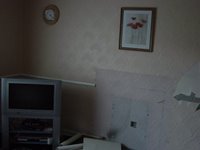
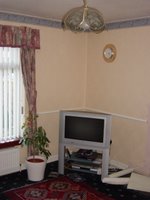 These are the before shots of my vile lounge. I hope it's not too long before I can upload the after shots.
These are the before shots of my vile lounge. I hope it's not too long before I can upload the after shots.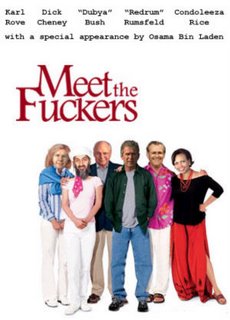 I just wanted to say that I think George W Bush is a nasty little bitch.
I just wanted to say that I think George W Bush is a nasty little bitch. I've just seen the trailer for Transamerica - and I'm now desperate to see this movie!
I've just seen the trailer for Transamerica - and I'm now desperate to see this movie! I'm going to tell you all about love.
I'm going to tell you all about love.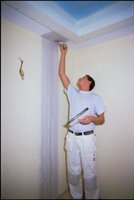 About three weeks ago, a butch lesbian came to our house to give us a quote for decorating the lounge. She said she'd have the quote to us within a couple of days. Almost a fortnight later, the quote arrived, by which time, I'd given up hope and contacted other contractors.
About three weeks ago, a butch lesbian came to our house to give us a quote for decorating the lounge. She said she'd have the quote to us within a couple of days. Almost a fortnight later, the quote arrived, by which time, I'd given up hope and contacted other contractors. I've got IBS. It's been three minutes since I did a toot.
I've got IBS. It's been three minutes since I did a toot. Have just read on BBC News that the corportaion have got into trouble over swearing by performers, notably Our Glorious Leader, during the Live8 performances.
Have just read on BBC News that the corportaion have got into trouble over swearing by performers, notably Our Glorious Leader, during the Live8 performances. I just went into the garden to take this photograph of myself with the timer. Anything has to be better than the last one (remember, I looked stoned).
I just went into the garden to take this photograph of myself with the timer. Anything has to be better than the last one (remember, I looked stoned). Just been reading BBC news online and am as pleased as punch to read that Jake Gyllenhaal has won the BAFTA award for best supporting actor for his role as Jack Twist in my favourite movie of all time, Brokeback Mountain.
Just been reading BBC news online and am as pleased as punch to read that Jake Gyllenhaal has won the BAFTA award for best supporting actor for his role as Jack Twist in my favourite movie of all time, Brokeback Mountain. Does anyone fancy playing Celebdaq? I used to play over a year ago, but lost interest when Paddy O'Connell disassociated himself with the concept. However, I've felt that spark again since Alan mentioned it on his blog.
Does anyone fancy playing Celebdaq? I used to play over a year ago, but lost interest when Paddy O'Connell disassociated himself with the concept. However, I've felt that spark again since Alan mentioned it on his blog. Honestly, I can't believe the level of freedom of expression people feel on blogs. Take, for example, my post entitled Minge, Alan and Dan. In the comments, Dan says he has more hair than the drag queens pictured and Alan says, "If that's meant to be me in the middle then I'm quite happy." - He's talking about an outrageous 60s-esque drag queen in a baby-doll dress.
Honestly, I can't believe the level of freedom of expression people feel on blogs. Take, for example, my post entitled Minge, Alan and Dan. In the comments, Dan says he has more hair than the drag queens pictured and Alan says, "If that's meant to be me in the middle then I'm quite happy." - He's talking about an outrageous 60s-esque drag queen in a baby-doll dress. Dert asked why I'm called Minge... So here's the story. Don't worry, it's not very long.
Dert asked why I'm called Minge... So here's the story. Don't worry, it's not very long. I borrowed this from Alan's blog...
I borrowed this from Alan's blog... mer, until I saw him staring at my crotch, then realised why he was so enthusiastic. He thought he was going to go back with me into the changing room and have a wee lick of Mr Todger.
mer, until I saw him staring at my crotch, then realised why he was so enthusiastic. He thought he was going to go back with me into the changing room and have a wee lick of Mr Todger.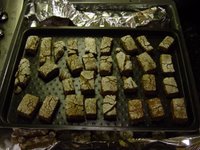 I made dog biscuits late this afternoon. How my poor darlings can eat them is beyond me. Making them has made the kitchen absolutely stink. But make them, I do, for my daughters love them, the bitches.
I made dog biscuits late this afternoon. How my poor darlings can eat them is beyond me. Making them has made the kitchen absolutely stink. But make them, I do, for my daughters love them, the bitches.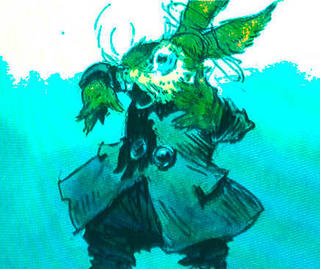 Does Raaijmakers have a meaning? You know, like Smith comes from Blacksmith and Taylor is someone who makes clothes...
Does Raaijmakers have a meaning? You know, like Smith comes from Blacksmith and Taylor is someone who makes clothes... Love is a catastrophe
Love is a catastrophe According to BBC News, Dick and Dom's In Da Bungalow will come to a final end when the current series finishes next month.
According to BBC News, Dick and Dom's In Da Bungalow will come to a final end when the current series finishes next month. My wee pal, Alan, the bitch, has agreed to be interviewed by Minge. In doing so, he's agreeing to put up the questions along with the answers on his blog. He's also agreeing to offer an interview to the readership of his blog. Whomsoever he interviews must do the same as him, answer his questions on their blog and offer an interview to their readership and so on... So, without further ado, Alan gets probed:
My wee pal, Alan, the bitch, has agreed to be interviewed by Minge. In doing so, he's agreeing to put up the questions along with the answers on his blog. He's also agreeing to offer an interview to the readership of his blog. Whomsoever he interviews must do the same as him, answer his questions on their blog and offer an interview to their readership and so on... So, without further ado, Alan gets probed: